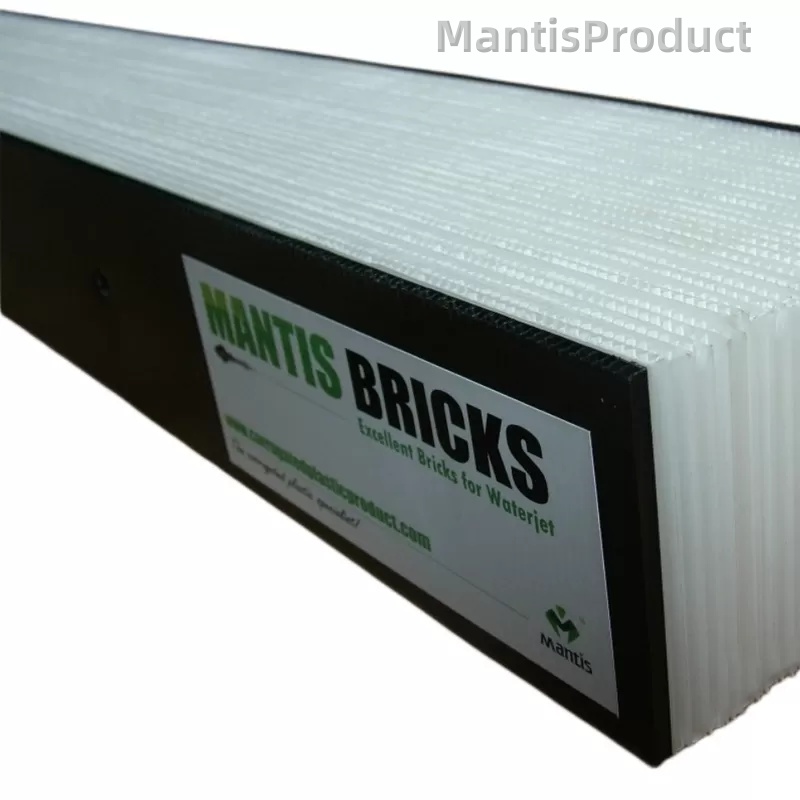Mantis WaterJet Cutting Bricks: Protecting New Materials for Waterjet Cutting
27-08-2025

Mantis Bricks, a kind of waterjet cutting bricks, it is specially designed and engineered to provide a smooth, flat, uniform surface for small, brittle or delicate cutting materials during the waterjet cutting processes.
Mantis waterjet cutting bricks made of durable co-polymer (combination of polypropylene and polyethylene), the waterjet cutting use a laminated pattern to minimize splash back from the waterjet while draining water and debris away quickly and effectively. Individual waterjet cutting bricks make changing out worn bricks easy. Mantis Waterjet Cutting Bricks are used for abrasive waterjet cutting or water-only cutting, such as cutting metal, stone, plastic and composites, etc. There are many advantages Mantis Bricks can bring to your waterjet cutting process, such as saving time and money.
By providing a consistent and reliable cutting surface, Mantis Bricks significantly extend the lifespan of your waterjet machine’s components, such as seals and nozzles, by reducing wear caused by erratic splash back and uneven pressure. The efficient drainage system prevents abrasive slurry from pooling, which minimizes the risk of secondary cutting and ensures cleaner, more precise cuts on even the most delicate materials.Additionally, the modular design allows for quick and cost-effective maintenance. Instead of replacing an entire cutting bed, you can simply swap out individual bricks as they wear down, drastically reducing downtime and material costs.
The bricks’ durable polymer composition is also resistant to corrosion and degradation from continuous exposure to water and abrasives, ensuring long-term performance.Overall, Mantis Bricks enhance cutting accuracy, improve workplace safety by controlling water and debris splash, and contribute to a more efficient and sustainable operation by reducing waste and resource consumption.